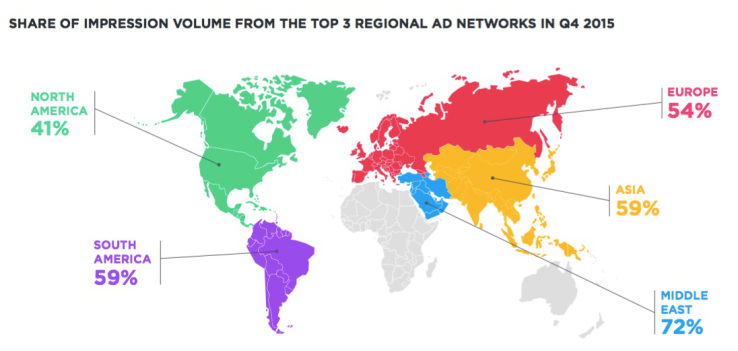

Mobile publishers need to work with at least a few different ad networks — that’s kind of the whole point of ad exchanges like Twitter-owned MoPub. Today the company is releasing a report that should give publishers a little more context when deciding which networks to work with.
For starters, the report says that 53 percent of MoPub publishers work with between two and five ad networks, with 47 percent of ad impressions coming from three big ad networks — Google-owned AdMob, AOL-owned Millennial Media (AOL also owns TechCrunch) and the Facebook Audience Network.
Elain Szu, a senior manager of exchange marketing at Twitter, suggested that the two-to-five range might represent the sweet spot for many publishers.
“If you work with too many ad networks, it’s a pain to manage the business relationship and the SDKs can get super heavy,” Szu said. “On the other hand, if you work with too few networks, you’re limiting the number of ad sources you have and not maximizing your ad revenue.”
She added that MoPub’s publishers often ask, “Which ad networks should I be working with and which ones are most effective?” In her view, MoPub offers a unique perspective on this, because many ad exchanges also own ad networks, but MoPub doesn’t “have any vested interested in picking any specific network.”
(Twitter advertisers can buy advertising with MoPub publishers, but Szu said those advertisers are treated as just another bidder on the MoPub exchange.)
To be clear, the report isn’t making specific recommendations for publishers choosing networks. Instead, it points to some of the dominant players in different categories. For example, when you look at different ad types, you see that AdMob, Facebook and Millennial are a big deal across-the-board, but TapSense is in the top four on native, while Chartboost is dominant for fullscreen interstitials.

Then the report goes even deeper than that, showing who’s got the most impressions, by format, in different regions. So for native advertising in the United States, Facebook is a big player, but so are Appsfire, mobileCore and Yahoo.
Lastly, the report breaks down the standard clickthrough rates for different ad formats, allowing publishers to see how they stack up against the industry as a whole. If they’ve got a fullscreen or native ad that’s getting less than 0.5 percent clickthrough rate, that means it’s doing relatively poorly and they may need to adjust the placement. On the other hand, an 0.5 percent CTR is pretty much in the normal range for a banner ad.
You can read the full report here.

